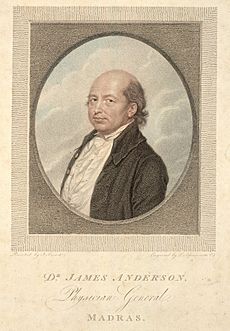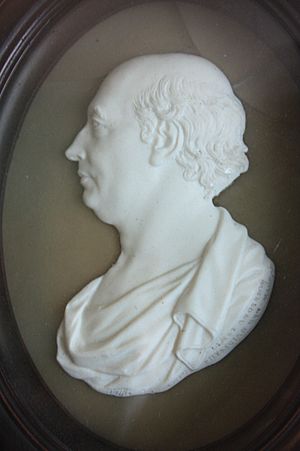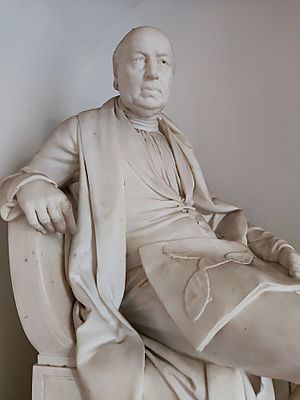James Anderson (botanist) facts for kids
James Anderson (born January 17, 1738 – died August 6, 1809) was a Scottish doctor and botanist. He worked in India for the East India Company. During his time there, he helped start a botanical garden in Madras (now Chennai). He tried to grow special plants like Opuntia cactus for cochineal insects. These insects were used to make a valuable red dye. He also worked on growing other useful plants and studied how to make silk and lac. He often wrote letters to his childhood friend, James Anderson LLD, who published some of his notes. This is why he is sometimes called James Anderson MD or James Anderson of Madras.
Life in India
James Anderson was born in Long Hermiston, Scotland, in 1738. He studied medicine at the University of Edinburgh. In 1759, he became a surgeon for the East India Company's navy. He was present during the Siege of Manila in 1763.
In 1765, Anderson moved to India and lived in the Madras Presidency. He became a surgeon in Madras in 1772. Over time, he rose to important positions. He became Surgeon Major in 1780 and then Surgeon-General of Madras in 1781. He also led the Madras Medical Board, which was created in 1786. Eventually, he became the physician-general.
Anderson was very interested in plants and gardening. He created a botanical garden in Mambalam, near Madras. Here, he introduced plants like mulberry trees and experimented with making silk. He also tried to grow apple trees. A big project for him was trying to produce local cochineal dye. For this, he set up a special garden of Opuntia cactus plants. He also wrote about growing sugarcane, coffee, and cotton. Some of his notes were published in a journal called The Bee. His childhood friend, James Anderson, LLD, edited this journal. They wrote about each other throughout their lives.
In his medical work, he also studied local plant-based medicines. He found that smoking the roots of "Datura ferox" helped with asthma. He also promoted the use of vaccinations to prevent smallpox.
James Anderson died at his garden home in Madras in 1809. Today, a bridge (now called College Bridge) and a road (Anderson Road) in Chennai are named after him. There is also a monument to him at St George's Cathedral in Madras.
Cochineal: The Red Dye Insect
Cochineal is a bright red dye that comes from tiny insects. For a long time, Spain controlled most of the cochineal trade. This made the dye very expensive. The British army needed a lot of red dye for their uniforms, so they were very interested in finding new sources.
In 1786, James Anderson wrote to Joseph Banks, a famous botanist, about insects he found in Madras. These insects looked like cochineal. Anderson thought they could be used for dye. He sent samples to Banks. He also learned that true cochineal insects only live on Opuntia cactus plants.
The East India Company was very keen to produce cochineal in India. They gave Anderson money to set up an Opuntia garden in Mambalam. In 1789, Opuntia plants with cochineal insects were brought from Brazil to India. These plants were grown in different places.
It was hard to bring the cochineal insects themselves to India alive. Finally, in 1794, a Captain R. Neilson successfully brought some specimens from Brazil. Anderson also found Opuntia plants growing near Mylapore, which had been brought by the Portuguese centuries earlier.
Even though a type of cochineal insect was established in India, the dye it produced was not as good as the Mexican kind. By 1797, India was producing about 4,000 pounds of cochineal a year. Rewards were offered to anyone who could establish the "true" Mexican cochineal in India. However, the best type of cochineal, Dactylopius coccus, was not successfully brought to India during Anderson's lifetime. The species introduced from Brazil was likely Dactylopius ceylonicus.
Anderson's Opuntia garden was badly damaged by a storm in 1807. After his death, his garden was looked after by Dr. Andrew Berry.




